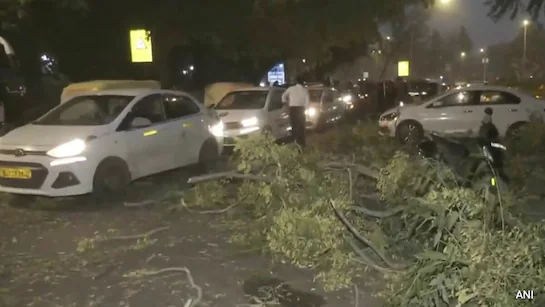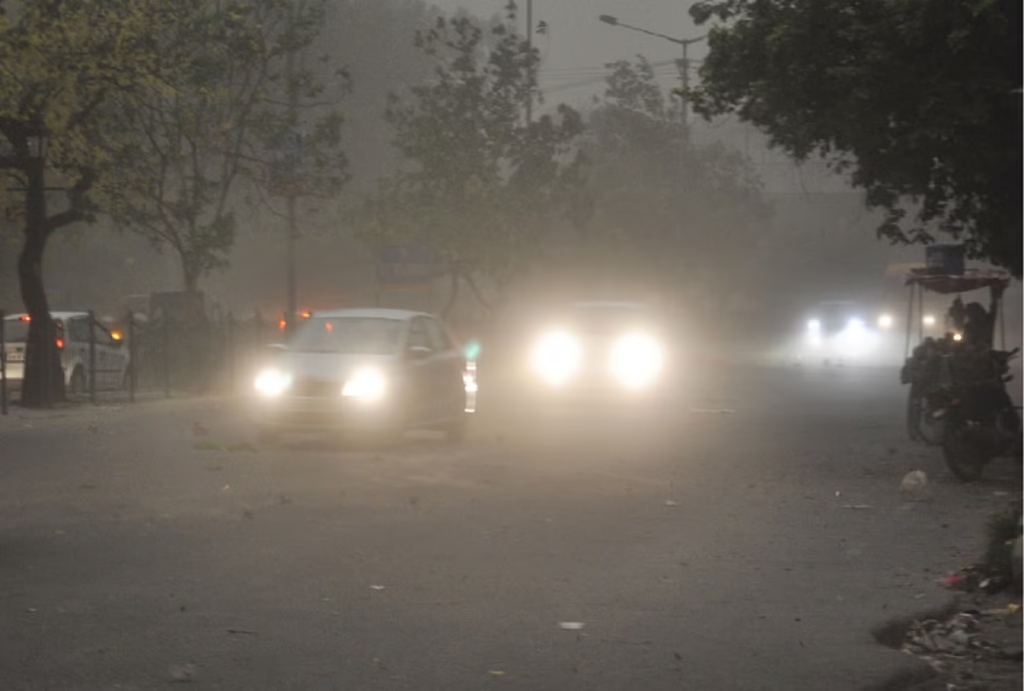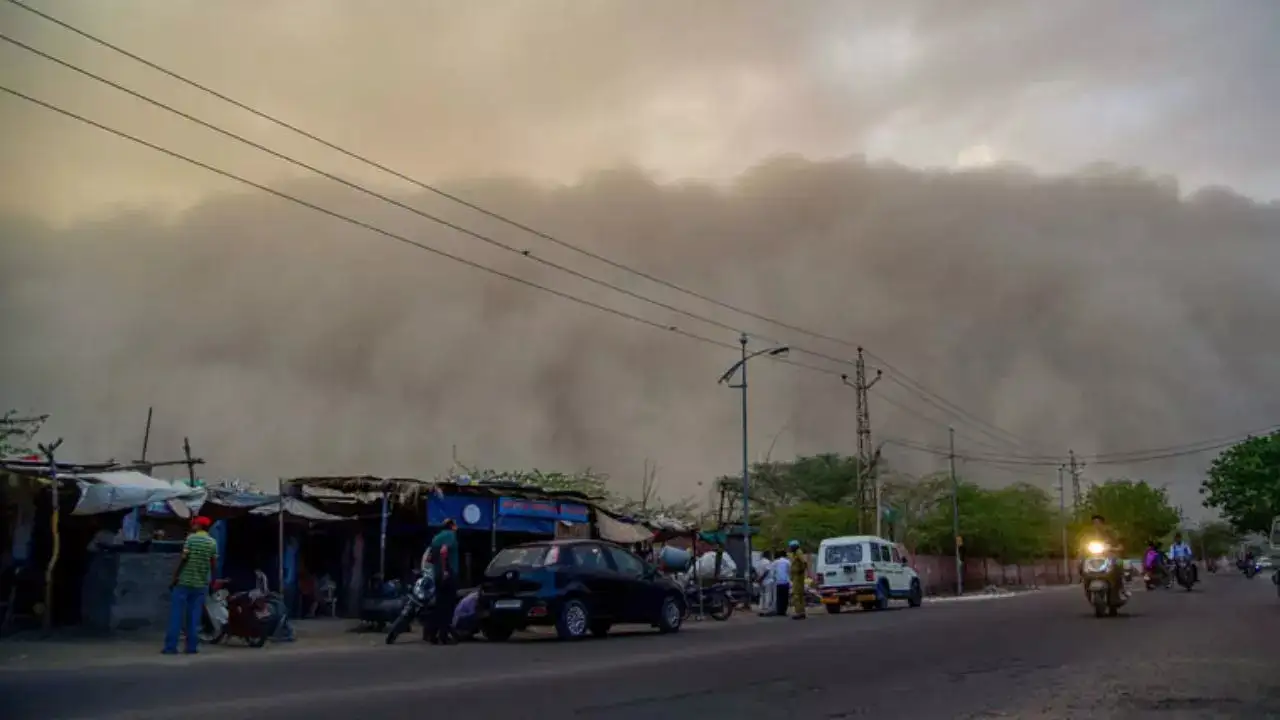Delhi NCR Dust Storms April 2025 | Causes, Impact & Safety Measures Explained
The Delhi NCR dust storms have become a recurring phenomenon, disrupting daily life and raising concerns about air quality, infrastructure damage, and public safety. On April 11, 2025, a powerful dust storm swept across Delhi and its surrounding areas, with wind speeds reaching up to 84 km/h. The storm caused significant destruction, including fallen trees, disrupted traffic, diverted flights, and loss of lives. This article explores the causes of these dust storms, their impact on the region, and actionable safety measures to protect yourself during such events.

What Are Dust Storms?
Dust storms occur when strong winds lift dirt and debris into the air, creating a dense cloud that reduces visibility and deteriorates air quality. These storms are particularly common in arid regions during summer months when high temperatures and dry soil conditions prevail.
Key Characteristics of Dust Storms:
-
Wind Speeds: Can range from 40 km/h to over 80 km/h.
-
Visibility Reduction: Dust clouds can lower visibility to less than 700 meters.
-
Air Pollution: PM10 and PM2.5 levels spike dramatically during dust storms, posing serious health risks.

Causes of Delhi NCR Dust Storms
-
Geographical Factors:
-
Delhi NCR is located near Rajasthan’s arid regions, which are prone to dust storms due to dry soil and strong winds.
-
Dust from neighboring areas like Pakistan and Afghanistan often travels long distances to reach Delhi during summer months.
-
-
Weather Conditions:
-
Intense heat combined with parched soil creates ideal conditions for dust storms.
-
Sudden changes in wind direction (West to Southwest) exacerbate the problem by carrying dust particles into the region.
-
-
Human Activities:
-
Construction activities and vehicular emissions contribute to loose particulate matter in the air, worsening the impact of natural dust storms.
-

Recent Delhi NCR Dust Storms (April 2025)
Key Highlights:
-
Wind Speed: Gusts reached up to 84 km/h, causing widespread damage.
-
Casualties: Two lives were lost, and at least five people were injured due to falling debris and collapsed structures.
-
Flight Disruptions: Over 15 flights were diverted from Delhi Airport due to poor visibility.
-
Infrastructure Damage: Trees, power poles, walls, and buildings were knocked down across the region.
Read More DRDO Laser Weapon: India’s Futuristic Defence Technology in 2025
Air Quality Impact:
-
PM10 levels soared beyond hazardous limits (3,826 micrograms per cubic meter at Jahangirpuri), far exceeding the safe threshold of 100 micrograms per cubic meter.
Health Risks Associated with Dust Storms
Dust storms can have severe health implications due to high concentrations of particulate matter (PM10 and PM2.5):
-
Respiratory Issues:
-
Dust particles can penetrate deep into the lungs, causing bronchitis, asthma attacks, and chronic obstructive pulmonary disease (COPD).
-
-
Eye Irritation:
-
Fine particles can lead to redness, itching, and irritation in the eyes.
-
-
Allergies:
-
Dust storms aggravate rhinitis and other allergic reactions.
-
-
Long-Term Effects:
-
Prolonged exposure can increase the risk of cardiovascular diseases.
-

Safety Measures During Dust Storms
-
Stay Indoors: Avoid going outside during a dust storm unless absolutely necessary. Stay in a well-sealed room to minimize exposure to dust particles.
-
Use Masks: Wear N95 masks or similar protective gear if you need to step out during a storm.
-
Protect Your Eyes: Use goggles or glasses to shield your eyes from dust particles.
-
Close Windows and Doors: Seal openings in your home to prevent dust from entering.
-
Monitor Air Quality: Keep track of air quality levels using apps or websites like AQI India or IQAir.
-
Avoid Driving: Poor visibility during a storm increases the risk of accidents; avoid driving unless it’s an emergency.
-
Keep Emergency Supplies Ready: Stock up on essentials like water, flashlights, batteries, and first aid kits in case of power outages or other disruptions.
Read More about Volkswagen Tiguan R-Line 2025: Stunning Features, Price, and Review
FAQs About Delhi NCR Dust Storms
Q1: What causes dust storms in Delhi NCR?
Dust storms are caused by strong winds lifting dirt and debris from arid regions like Rajasthan or neighboring countries during summer months.
Q2: How do dust storms affect air quality?
Dust storms significantly worsen air quality by increasing PM10 and PM2.5 levels beyond hazardous limits.
Q3: What was the wind speed during the recent dust storm in April 2025?
Wind speeds reached up to 84 km/h during the recent storm in Delhi NCR.
Q4: How can I protect myself during a dust storm?
Stay indoors, wear masks if outdoors, seal windows/doors at home, and monitor air quality levels regularly.
Q5: What are the health risks associated with dust storms?
Health risks include respiratory issues (e.g., asthma), eye irritation, allergies, and long-term cardiovascular problems due to particulate matter exposure.
Q6: Why does Delhi experience frequent dust storms?
Delhi’s proximity to Rajasthan’s arid regions combined with intense heat and dry soil conditions makes it susceptible to frequent dust storms.
Q7: How do dust storms impact visibility?
Dust clouds reduce visibility drastically—sometimes below 700 meters—making driving or outdoor activities dangerous.
Long-Term Solutions for Mitigating Dust Storm Impact
-
Afforestation Initiatives: Planting trees along highways and barren lands can act as natural barriers against wind-driven dust particles.
-
Water Sprinkling Measures: Municipal corporations should ensure regular sprinkling of water on roads and construction sites.
-
Improved Construction Practices: Enforcing stricter regulations on construction activities can reduce loose particulate matter.
-
Public Awareness Campaigns: Educating residents about safety measures during dust storms can minimize health risks.
-
Monitoring Systems: Deploying mobile vans equipped with pollution monitoring tools for targeted action against local pollution sources.
Conclusion on Delhi NCR dust storms
The recurring phenomenon of Delhi NCR dust storms, driven by geographical factors and human activities, underscores the urgent need for proactive measures to mitigate their impact on public health and infrastructure. While short-term safety practices like staying indoors or wearing protective gear are essential during such events, long-term solutions like afforestation and stricter pollution control policies are crucial for reducing their frequency and severity in the future.
By understanding the causes behind these storms and taking appropriate precautions, residents can better protect themselves while contributing to efforts aimed at improving air quality across Delhi NCR.






Bihar Clock Tower 40 Lakh | Controversy Explained & Official Clarifications
[…] dont want to see this popup again. Skip to content LATEST NEWS Delhi NCR Dust Storms April 2025… Bharat Electronics Defence Contract2025: A Strong… Bihar Clock Tower 40 Lakh |… Bokaro […]
Tata Capital Pankh Scholarship | Eligibility & Application Guide 2025
[…] dont want to see this popup again. Skip to content LATEST NEWS Delhi NCR Dust Storms April 2025… Bharat Electronics Defence Contract2025: A Strong… Bihar Clock Tower 40 Lakh |… Bokaro […]